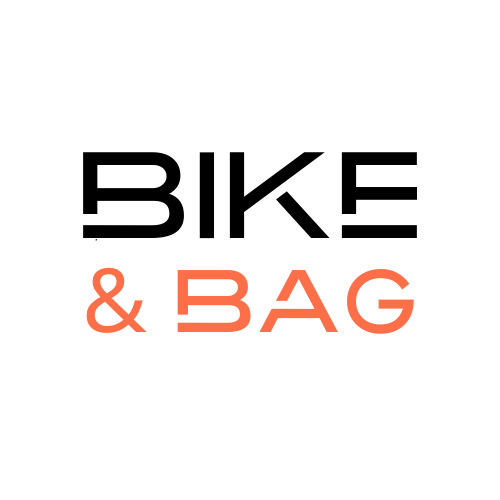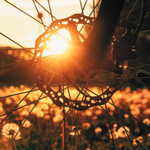Embarking on a bikepacking adventure is a thrilling way to explore the world on two wheels, offering a unique blend of cycling and camping that requires careful consideration of gear and setup. Choosing the perfect bikepacking setup can be a daunting task, with a multitude of options available that cater to different needs and preferences. In this guide, we'll delve into expert tips and recommendations to help you select the best bikepacking bags and gear, ensuring a successful and enjoyable journey. From lightweight bike bags that enhance speed and efficiency to versatile bikepacking essentials for longer trips, we aim to empower you with the knowledge to make informed decisions. Join us as we explore the intricacies of bikepacking, providing you with the confidence and insights needed to thrive on your next adventure.
Finding the Right Bikepacking Setup
Selecting the ideal bikepacking setup is crucial for a successful adventure. This section will guide you through understanding your specific needs and comparing different bag types to create the perfect combination for your journey.
Understanding Bikepacking Needs
When planning your bikepacking adventure, it's essential to assess your specific requirements. Consider the duration of your trip, the terrain you'll encounter, and the weather conditions you're likely to face.
For shorter trips, you might prioritize lightweight, minimalist setups that allow for faster travel. In contrast, longer journeys may require more storage capacity for food, water, and camping gear.
The Two Wheeled Wanderer emphasizes the importance of balancing weight distribution across your bike. This not only improves handling but also ensures a more comfortable ride over long distances.
Don't forget to factor in your personal preferences and riding style. Some bikepackers prefer a more traditional touring setup with panniers, while others opt for a sleeker, more aerodynamic approach using frame bags and seat packs.
Comparing Bag Types and Styles
Bikepacking bags come in various styles, each designed to maximize storage while maintaining your bike's handling characteristics. Let's compare the most common types:
Frame Bags: These fit within the main triangle of your bike frame, offering excellent weight distribution and easy access to essentials.
Seat Packs: Attached behind the saddle, these bags provide substantial storage without affecting your pedaling.
Handlebar Bags: Mounted on the front of your bike, these are ideal for lightweight, bulky items like sleeping bags or clothing.
REI's expert advice suggests combining these bag types for a well-balanced setup. Consider using smaller accessory bags, like top tube bags or stem bags, for items you need quick access to while riding.
When choosing between waterproof and water-resistant options, think about the climate you'll be riding in. Waterproof bags offer peace of mind in wet conditions but may be heavier and more expensive.
Top Brands for Bikepacking Bags
The market offers a wide range of high-quality bikepacking bags. This section highlights some of the top brands known for their durability, innovation, and performance in various conditions.
Rhinowalk: Practical and Affordable Bar Bag Solutions
Rhinowalk is renowned for providing functional and affordable cycling bags, making it a popular choice among riders seeking reliable gear without overspending. Their handlebar bags are particularly commendable for offering practical front-end storage solutions for touring and bikepacking.
The brand prioritises ease of use and adaptability in its designs. Many Rhinowalk handlebar bags feature simple attachment systems with quick-release buckles or Velcro straps, allowing for easy installation and removal when needed. This makes loading and unloading at campsites or during stops straightforward and hassle-free.
Although budget-friendly, Rhinowalk’s materials are robust and water-resistant, often utilising durable PVC fabrics or coated polyester to protect contents from rain and road spray. Thoughtful design elements such as roll-top closures, reflective details for visibility, and internal organisation enhance usability on the trail.
Despite being more affordable than premium brands, Rhinowalk’s handlebar bags perform well where it matters — maintaining weight stability and accessibility up front. Their variety of sizes and mounting options ensures riders can find a setup that suits their bike and trip style.
In numerous bikepacking communities and reviews, Rhinowalk is recognised as a smart entry-level or budget-conscious choice for dependable bar bag storage, especially for cyclists building out their kit or planning shorter adventures.
Ortlieb: Durable and Waterproof
Ortlieb has built a reputation for producing some of the most reliable waterproof bags in the cycling world. Their bikepacking range combines durability with smart design features.
The brand's signature roll-top closure system ensures a watertight seal, making their bags ideal for all-weather adventures. Ortlieb uses PVC-coated polyester fabric, known for its resistance to tears and abrasions.
While Ortlieb bags tend to be on the pricier side, many cyclists find the investment worthwhile for the peace of mind and longevity they provide.
Apidura: Versatile Adventure Ranges
Apidura has quickly become a favorite among bikepackers for their lightweight, minimalist designs. The brand offers several ranges catering to different riding styles and conditions.
Their Expedition series is built for durability and weather resistance, ideal for long-distance tours. The Racing series focuses on ultralight materials and aerodynamic shapes for competitive events.
Apidura's innovative approach is evident in features like their patented roll-down closure system, which allows for variable capacity. This flexibility is particularly useful for trips where your gear needs may change day-to-day.
Many bikepackers on Reddit praise Apidura for their balance of weight, durability, and functionality. The brand's commitment to sustainability, using recycled materials in some products, is an added bonus for environmentally conscious cyclists.
Restrap: Flexible Bar Bag Options
Restrap, a UK-based company, has gained recognition for their high-quality, handmade bikepacking gear. Their bar bags, in particular, offer excellent versatility for front-end storage.
The brand's holster system allows you to easily attach and detach a dry bag, making camp setup and breakdown more efficient. This modular approach also means you can adjust your carrying capacity based on trip requirements.
Restrap's use of durable, locally sourced materials reflects their commitment to quality and sustainability. Their products often feature thoughtful details like magnetic closures and reinforced stress points.
Tristan Ridley's bikepacking guide highlights the importance of reliable bar bags for weight distribution, an area where Restrap excels. The brand's range of sizes and accessories makes it easy to customize your front-end storage solution.
Essential Tips for Bikepacking Success
Mastering the art of bikepacking goes beyond just choosing the right gear. This section provides crucial advice on packing efficiently and securing your equipment for a smooth, enjoyable ride.
Packing Light and Smart
The key to successful bikepacking lies in striking the perfect balance between bringing essential items and keeping your load manageable. Here are some tips to help you pack light and smart:
- Create a detailed packing list and scrutinize each item. Ask yourself if it's truly necessary or if it serves multiple purposes.
- Opt for lightweight, compact versions of camping gear. Modern technology has made it possible to find ultralight tents, sleeping bags, and cooking equipment.
- Plan your food carefully. Choose calorie-dense, non-perishable items that provide the nutrition you need without excess weight or bulk.
Remember, as experienced bikepackers often say, "You pack your fears." Try to resist the urge to overpack for every possible scenario.
Organize your gear by frequency of use. Keep items you'll need during the day, like snacks and rain gear, easily accessible. Store less frequently used items, such as camp equipment, in harder-to-reach bags.
Securing Your Gear Efficiently
Properly securing your gear is crucial for both safety and comfort during your bikepacking adventure. Follow these guidelines to ensure your equipment stays put:
- Use compression straps or bungee cords to minimize movement within bags.
- Distribute weight evenly across your bike, with heavier items lower and closer to the center of the frame.
- Regularly check and adjust straps and mounting points, especially on rough terrain.
REI's expert advice emphasizes the importance of practicing packing and unpacking before your trip. This not only helps you refine your system but also ensures you're familiar with how your bike handles when fully loaded.
Consider using small stuff sacks or packing cubes within larger bags to keep items organized and easily accessible. This can be particularly helpful for frequently used items or when searching for specific gear in low-light conditions.
Lastly, always secure any loose straps or excess material to prevent them from getting caught in your wheels or drivetrain. A few extra moments spent on proper securing can save hours of frustration on the trail.












